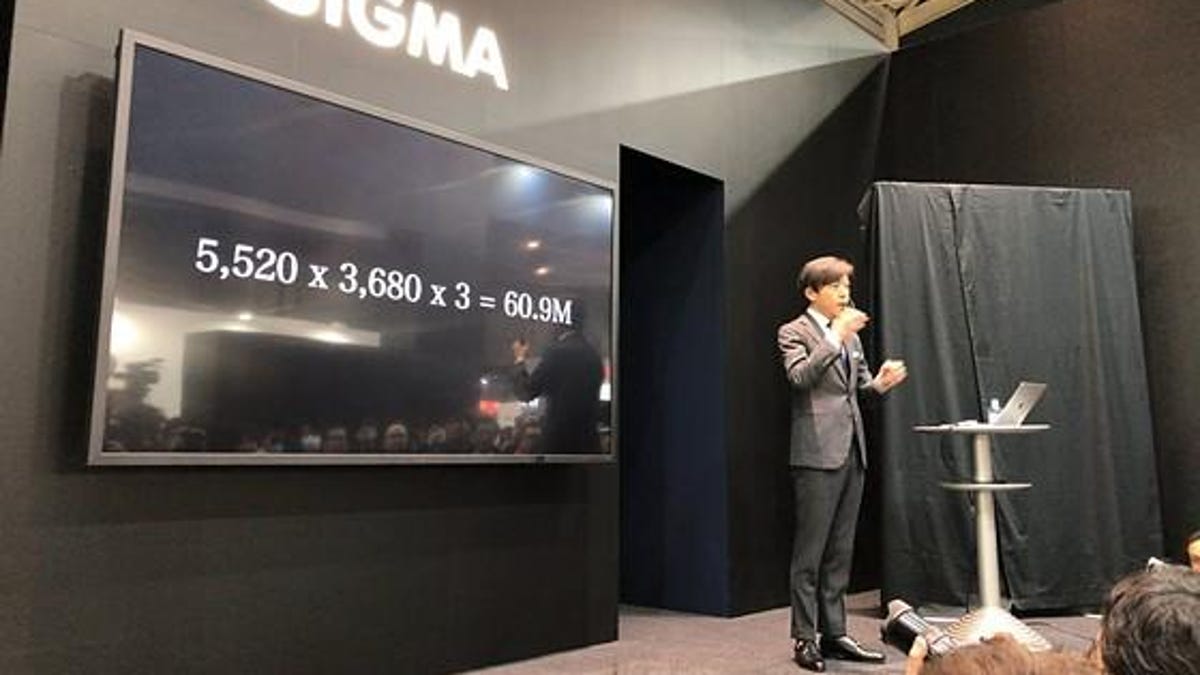Sigma '60 megapixel' Foveon mirrorless camera delayed until 2020, report says
We won't see the L-Mount full-frame camera the company announced at Photokina until next year.

Sigma derives its Foveon resolution numbers by multiplying the spatial dimensions by the number of color primaries (i.e., red, green and blue). In this case that's 5,520x3,680x3 for a total of 60.9 "megapixels."
Sigma's the only company that announced a full-frame mirrorless camera in 2018, but it hasn't started selling it. When the company talked about it at Photokina in September, it didn't provide much detail save to say it would be out this year. Now that's slipped to 2020, but the company did state a resolution for the new version of its Foveon sensor: 60.9 megapixels.
A report by DC Watch (via PhotoRumors) shows photos of a briefing about the camera, including a screen with Sigma's usual Foveon math.
Foveon sensors have always had smaller spatial dimensions than typical sensors using a Bayer color filter array, which has historically put them at a "moar pixels" marketing disadvantage.
The structure of the current Foveon X3 sensor.
A Bayer array mosaics the red, green and blue filters so that for every block of four pixels, one's got a red filter, one a blue and two have green. The Foveon sensor, in contrast, is composed of red-, green- and blue-sensitive layers. It uses those to create a luminance channel (that's the image detail), which is then combined with the color data to form the full-color picture.
Sigma math -- in which the company defines a "pixel" as a single color element rather than an actual picture element -- takes the 20-megapixel spatial dimension of the new sensor (5,520x3,680) and multiplies it by the number of layers to derive its 60.9-megapixel figure. So (as I've said before) while the Foveon sensor might deliver better color and detail than other sensors with similar numbers of pixels, the spatial resolution of the final files is represented by the lower numbers, in this case, 20 megapixels.
It's kind of a reverse of the type of pixel-binning that's used by the Huawei P20 Pro, which takes a 40-megapixel sensor and aggregates each group of four pixels into an uberpixel with increased light sensitivity, resulting in a 10-megapixel photo.
2018 was a big year for full-frame mirrorless announcements: Nikon, Canon and Panasonic and Sigma (via the L-Mount alliance) all jumped into what previously had been Sony's sole domain.
Sigma declined to comment.
Originally published 8:40 a.m. PT.
Update, 11:40 a.m. PT: Adds Sigma's response to our request for comment.

